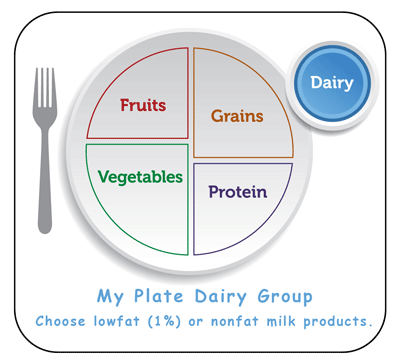February is national Heart Health month and a reminder to all of us about ways we can keep our hearth healthy through diet and exercise.
For the next few blogs, I am going to focus on each of the food groups and what foods keep our heart healthy and what foods may not be so healthy for you and your family's heart. And yes, that includes children because believe it or not, unhealthy changes in the heart can begin during childhood.
Part 1: Healthy Hearts and Dairy
Let's start with the DAIRY Food group. These are foods that are made of milk (that include lactose free milk). 
First, let me start by saying that milk is important for your family's body because it is fortified with calcium and vitamin D. (it has nine key nutrients but is best known for its high amount of calcium and vitamin D). Calcium and vitamin D are key for developing healthy bones and teeth during childhood and maintaining them through adulthood.
There are many ways to include dairy in your family daily meals. The most popular way is milk but that is not the only foods. Cheese is another great way to get enough dairy into your family's diet. Cheese is also lower in lactose than milk.
You may hear reports that cheese is too fattening and not good for your heart. But dairy, including cheese comes in low-fat and low-sodium options. You can find lots of low-fat dairy options in the grocery store now. My husband and son who are both lactose intolerant still enjoy dairy with the lactose free options.
Heart Health Tip: To help your heart stay healthy choose fat free or low-fat (1%) milk or milk products.
I personally love cheese. I sprinkle a little feta on my salad for extra taste and add a slice of low-fat cheese to my omelet! Kids love cheese too and it actually is the #2 food source for calcium in a child's diet.
Dairy also has protein so it helps you feel fuller while providing the building blocks for the body.
To get enough calcium and vitamin D, it is recommended that you have 3 servings of dairy each day.
Heart Health Tip: You don't need more than 3 servings a day. Portion control and serving size is important.
See the quantities that make up one serving of the dairy group.

0 Comments